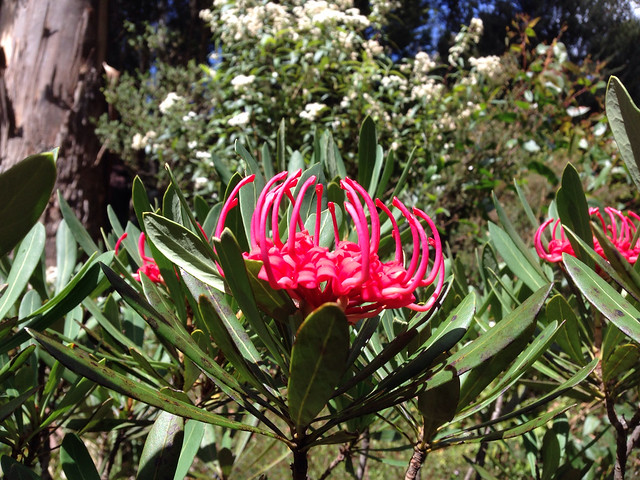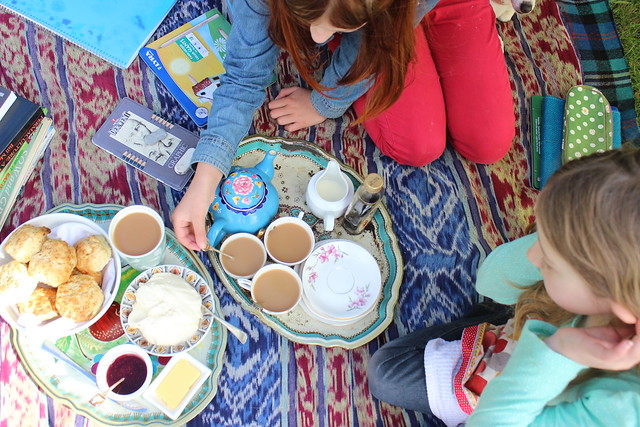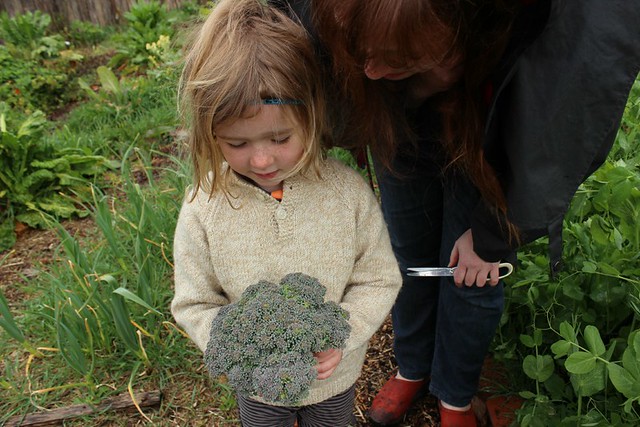Showing posts with label spiral garden. Show all posts
Showing posts with label spiral garden. Show all posts
31 December 2015
2015 Gratitude
How do you farewell a year that has challenged you more than most? I've noticed this year has been a tough one, teaching many life lessons, for those around me and further afield. And while I'm not sure whether it's because of the stars or the number of people on our tiny planet, I'd say some learning, although challenging, can be good. I won't miss 2015. But I'm sort of glad for what it has taught.
Tonight I'll be standing around the campfire in my garden with those dearest to me and raising a glass of rhubarb champagne to toast the old year and welcome new energy for the new. Oh how we need it! Things to be grateful for in 2015:
1. A comfy nest, cranking garden and health permaculture system that keeps growing before our eyes.
2. The experience of living a zero waste life and the lessons that has brought us all. Awakening the activists in our owlets and a simpler lifestyle we feel happier with.
3. The experience of sharing our Seedlings e-course with loads of families and watching them get it, love it and inspire others around them - including us!
4. The challenge of being doubted, losing friends and letting go of a community we loved. Oh it's been a ride! We're grateful that we were tested to step outside our bubble, seek other solutions and try new things. Our community has widened and our owlets feel more supported to chase their passions.
5. Music. Being pushed to find a creative way for the owlets to learn and enjoy making music. The confidence and enjoyment it has brought them and a shared passion for all of us.
6. Friendships that have been strengthened through time shared, heartfelt chats, tears and hugs.
7. Our little business that keeps ticking away and growing in a direction we're passionate about. That fits into our lives somehow, rather miraculously, and puts a little bit of food on our table.
8. Our little family. The honesty, love and enjoyable time we've shared this year. Healthy, happy and resilient owlets and the love and life we all share together.
9. My best pal. The love and support he's shown me this year and the fun we have making and working on things together.
In 2016… well my energy has been travelling outward for a while in a massive exhale, and I hit extreme burnout this year. I'm looking forward to a year of observing, catching my breath and inhaling all that is good and creative in the world. It's going to be soooo good.
Wishing you and yours a wonderful new year with all things good in your future.
How's your year been?
Do you have much to be grateful for?
Any plans for your new year?
Love and hugs,
~ Lauren. xx
Labels:
celebrating,
family,
nurturing,
owlets,
permaculture,
seedlings,
spiral garden,
zero waste
30 October 2015
How to shape & care for a bolga basket
Possibly our most favourite things for going out and about are our bolga baskets. My mama basket travels everywhere with me. Part handbag, knitting basket, picnic basket, shopping basket, it's always on my arm when we leave the house. The owlets like theirs for carrying lunches, toys or art materials, or for collecting eggs or beach treasures. At home, they make pretty useful toy storage - we love that.
Bolga baskets are one of our favourite products in Spiral Garden too. Fair trade, handmade and compostable, they tick so many boxes for us. They're woven by hand from the elephant grass that grows in the flood plains of the White Volta, near Bolgatanga, in Northern Ghana. When they arrive though, they're a bit squashed from their journey. A bit flat and wonky, and this is how our customers receive them too… But one of our other favourite things about these gorgeous, round baskets, is that the new owner gets a chance to participate in moulding them just the way they like. It's quite a gentle, tactile process that we love… Here's how to do it:
Fill the sink (or bath for a big basket) with cold water. Hold your basket underwater for about one minute, leather handle and all.
Remove from water and start moulding it to the shape you like. You might like a rounded bottom, or something flatter. You might like your basket to be squat or elongated. It's totally up to you! A symmetrical basket will keep weight evenly distributed though so aim for that. This is a fun process for kids too.
Once you're happy, sit your basket in the sunshine. If it's a windy day, pop a rock inside so it doesn't blow away! Your basket should be dry and ready to use in about 30 minutes!
If you've had your basket in use for a while, it may start to look a little lived in (not unlike the baskets in the top picture. You can complete the process above to keep your basket in good shape anytime in the future. The leather handle will most likely stay well polished with regular use, but it can be cleaned and kept in good condition with some boot polish or leather conditioner - a good natural version we've heard of is lemon essential oil rubbed on with a soft cloth. Try not to carry super heavy loads in your basket because it can weaken it over time, but look after it and it'll be looking beautiful for years to come!
You can find Mama baskets and Small bolga baskets at Spiral Garden, here.
~ Lauren. xx
3 June 2015
Spiral Garden Review :: Crayons
This post is part of a regular series where we review and feature our favourite things in Spiral Garden. We try and road test as many of our products as possible so we can make sure our range is full of only the best sustainable things! Part of this post first appeared on the Spiral Garden blog and has been updated for this space.
Since beginning our work at Spiral Garden, we have undertaken a great deal of research into the products we stock, wanting to bring our customers the best quality range of ethical and environmentally friendly products we can find. We've sought out the products we'd love to use most in our own home. We've asked why our popular products are so popular and what our customers love about them best. We've also looked into their manufacturing, shipping process and ingredients lists, where possible.
It's not always an easy task to find the nitty gritty on certain products. And many we take for granted as being "safe", "non-toxic" and "harmless", when a little further research suggests perhaps they are not 100% so... It's quite an eye-opening process and as such, certain products may not be re-stocked as we find they do not meet our expectations. Or, we'll continue to stock them but let you know their credentials as much as we can. With all that in mind, to begin with, our attention turned to art supplies in Spiral Garden and today, I'm going to tell you all about our range of crayons and the process we've undertaken to understand them and create the range we have.
Stockmar Crayons
The first product we bought from Spiral Garden, as customers many years ago, was a tin of Stockmar Beeswax Crayons. They are so beautifully packaged in their sturdy little tin. Their bright rainbow colours in block or stick form... They smell like honey! And they last a series of toddlers, as our set can attest. These are artist quality crayons, meaning the colours are bright and bold. They glide onto the paper and their colour stays fast. Unfortunately it stays fast to the walls too, another fact our series of toddlers have demonstrated...
The shape of the Stockmar Block Crayons is fantastic for small hands to hold and begin drawing and experimenting with colour. Our children held them and enjoyed making their first marks on paper at only nine months! If you want a great to use, artist quality beeswax crayon that will last forever, these fit that bill. Something our research has turned up is that, while Stockmar crayons do contain pure beeswax, they also contain a minimum of 10% paraffin (we've heard it may be even higher than this), among other chemicals which are used to help the colours stay fast and the crayons non-sticky and solid for years. Their pigments are often reported as "food safe" and "natural" when in actual fact they are pigments safe for use in food packaging, not food itself and some pigments are organic, while others are inorganic.
Paraffin in crayons, whilst being non-toxic and safe for human use, is made from petroleum, which in itself is toxic and not something I'm super comfortable with my toddlers ingesting and is one reason we've avoided buying commercial brands of parrafin crayons.
But its only a little alarming, when I consider many of the other things our toddlers have ingested... Overall, we love these crayons. Stockmar is an ethical company as far as we can tell and while not all product information is displayed transparently, basic information is generally accessible. They are made in Germany and shipped to a distributor in Australia who ships them to our supplier in Melbourne, who ships them to us... there's a fair bit of handling involved.
Homemade Crayons
After assessing all this information about Stockmar Crayons, we needed to understand the crayon making process. We procured a block of local beeswax and made our own and learnt that we are not so great at making attractive crayons ourselves! They were patchy and a bit lumpy and we'd need LOTS of experimenting to refine them, but they worked, so that's the main thing! But, we did understand more about the process, the chemicals and how they work to get the colour onto the paper.
Busy Bee Beeswax Crayons
Next we found the most natural crayon we could. Busy Bee Beeswax Crayons are made with Beeswax, natural pigments and clays. That's it. They are sticky to touch, so the wrapper is handy. We're thinking they may break a little more easily than Stockmar crayons, although this hasn't happened yet. Their colours are very natural looking. So natural that they lend themselves very well to drawing nature and in particular, the Australian landscape. The colours remind us of Tasmania.
These crayons are not what I would describe as artist quality. They are more transparent and they don't have the same glide as Stockmar crayons which we understand from our crayon-making experiments... But they are still beautiful to use and in the hands of an artist, any tool can create a thing of beauty. They smell like honey! And they come direct from the hive, being made in the US by a family company with natural parenting values akin to our own.
Brilliant Bee Crayons
These crayons are triangular, which is a great ergonomic design for owlets who are learning to write. They also come in a selection of 24 colours - the latest we stock. This is handy for owlets who want access to more realistic colours for whatever they are drawing, and more choice in general. They contain beeswax, and are non-toxic, although we're sure they contain some paraffin and non-organic pigments if that is something that bothers you. Their packaging, although reusable, contains plastic, which is something we avoid if possible. In this case, it ors help to secure and hold the crayon selection well and is sturdy enough to last, so we're happy to accept it. These are a bright, vivid crayon and very easy to hold and use. Perfect if you need access to a big range of colours.
Crayon Rocks
Looking at our crayon range so far and Spiral Garden's historically most popular products, we decided to reintroduce a vegan option. And we are thrilled with Crayon Rocks. They are bright, great quality, fun to use... They look like jelly beans! They come in a gorgeous red velvet or muslin pouch which adds a little magic and is super transportable - perfect when we go outside to draw and can throw them in a bag or basket. Crayon Rocks are made from soy wax, and a mix of other waxes including carnauba wax, mineral pigments and limestone. They are kosher too.
Crayon Rocks are made ethically, by a small company in the US. They work fantastically for little growing hands and have been recommended by occupational therapists for helping to develop children's tripod grip, ready for pencils and pens as their skills develop. They are best used with supervision and are not recommended for children under 3yrs because they are a choking hazard, although our toddler has been ok with them as she's moved past popping things in her mouth. We just love that they are so special and fun, and offer something different for our art supply cupboard.
Filana Organic Beeswax Crayons
Late last year, we believe we found the crayon we've been looking for all these years. Realising how beautiful Stockmar Crayons are to use, but wanting a more natural alternative, a family in the US set about making some organic beeswax crayons. Filana Organic Beeswax Crayons are beeswax and soy based. Filana's makers based them on Goethe's colour wheel and created colours used in many Waldorf Steiner schools for crayon drawing. Like Stockmar, these come in a block or stick form. They are robust and the colours are vivid. But what's amazing about these crayons is that they've taken the best bits about all our favourite crayons and created something we find even better! We were actually pretty surprised the first time we used them. The colour and pigment of Stockmar's crayons combines with the smooth, glide-ability of Crayon Rocks. And they're organic and made by hand by a family company! They also ship directly to us, keeping handling down and costs low. And their packaging is compostable - a super important factor for us. We really can't find flaw with them and of all the crayons in our crayon bowl, these are the ones that get the most use nowadays. An instant classic and a lot of fun to work with. You can see them in action in a video review of them, by Sarah Baldwin, over here.
We leave crayons in a space where the Owlets can easily reach them. Near sketch books or paper, they use them readily as they play and make art learn about colour. They pick and choose the right crayon for the job, as do we - crayons are fun to work with! Whether used on their sides, or as finer points for linework, we all enjoy using them to put colour on a page, quickly and expressively.
How do you use crayons in your nest?
Do you have a favourite?
You can find our complete range of crayons and drawing materials here.
This week, you could win TWO sets of our Filana crayons - one block and one stick 12pk. Just sign up to our Spiral Garden newsletter to be in the running! Go here to sign up!
~ Owletmama. xx
Since beginning our work at Spiral Garden, we have undertaken a great deal of research into the products we stock, wanting to bring our customers the best quality range of ethical and environmentally friendly products we can find. We've sought out the products we'd love to use most in our own home. We've asked why our popular products are so popular and what our customers love about them best. We've also looked into their manufacturing, shipping process and ingredients lists, where possible.
It's not always an easy task to find the nitty gritty on certain products. And many we take for granted as being "safe", "non-toxic" and "harmless", when a little further research suggests perhaps they are not 100% so... It's quite an eye-opening process and as such, certain products may not be re-stocked as we find they do not meet our expectations. Or, we'll continue to stock them but let you know their credentials as much as we can. With all that in mind, to begin with, our attention turned to art supplies in Spiral Garden and today, I'm going to tell you all about our range of crayons and the process we've undertaken to understand them and create the range we have.
Stockmar Crayons
The first product we bought from Spiral Garden, as customers many years ago, was a tin of Stockmar Beeswax Crayons. They are so beautifully packaged in their sturdy little tin. Their bright rainbow colours in block or stick form... They smell like honey! And they last a series of toddlers, as our set can attest. These are artist quality crayons, meaning the colours are bright and bold. They glide onto the paper and their colour stays fast. Unfortunately it stays fast to the walls too, another fact our series of toddlers have demonstrated...
The shape of the Stockmar Block Crayons is fantastic for small hands to hold and begin drawing and experimenting with colour. Our children held them and enjoyed making their first marks on paper at only nine months! If you want a great to use, artist quality beeswax crayon that will last forever, these fit that bill. Something our research has turned up is that, while Stockmar crayons do contain pure beeswax, they also contain a minimum of 10% paraffin (we've heard it may be even higher than this), among other chemicals which are used to help the colours stay fast and the crayons non-sticky and solid for years. Their pigments are often reported as "food safe" and "natural" when in actual fact they are pigments safe for use in food packaging, not food itself and some pigments are organic, while others are inorganic.
Paraffin in crayons, whilst being non-toxic and safe for human use, is made from petroleum, which in itself is toxic and not something I'm super comfortable with my toddlers ingesting and is one reason we've avoided buying commercial brands of parrafin crayons.
But its only a little alarming, when I consider many of the other things our toddlers have ingested... Overall, we love these crayons. Stockmar is an ethical company as far as we can tell and while not all product information is displayed transparently, basic information is generally accessible. They are made in Germany and shipped to a distributor in Australia who ships them to our supplier in Melbourne, who ships them to us... there's a fair bit of handling involved.
Homemade Crayons
After assessing all this information about Stockmar Crayons, we needed to understand the crayon making process. We procured a block of local beeswax and made our own and learnt that we are not so great at making attractive crayons ourselves! They were patchy and a bit lumpy and we'd need LOTS of experimenting to refine them, but they worked, so that's the main thing! But, we did understand more about the process, the chemicals and how they work to get the colour onto the paper.
Busy Bee Beeswax Crayons
Next we found the most natural crayon we could. Busy Bee Beeswax Crayons are made with Beeswax, natural pigments and clays. That's it. They are sticky to touch, so the wrapper is handy. We're thinking they may break a little more easily than Stockmar crayons, although this hasn't happened yet. Their colours are very natural looking. So natural that they lend themselves very well to drawing nature and in particular, the Australian landscape. The colours remind us of Tasmania.
These crayons are not what I would describe as artist quality. They are more transparent and they don't have the same glide as Stockmar crayons which we understand from our crayon-making experiments... But they are still beautiful to use and in the hands of an artist, any tool can create a thing of beauty. They smell like honey! And they come direct from the hive, being made in the US by a family company with natural parenting values akin to our own.
Brilliant Bee Crayons
These crayons are triangular, which is a great ergonomic design for owlets who are learning to write. They also come in a selection of 24 colours - the latest we stock. This is handy for owlets who want access to more realistic colours for whatever they are drawing, and more choice in general. They contain beeswax, and are non-toxic, although we're sure they contain some paraffin and non-organic pigments if that is something that bothers you. Their packaging, although reusable, contains plastic, which is something we avoid if possible. In this case, it ors help to secure and hold the crayon selection well and is sturdy enough to last, so we're happy to accept it. These are a bright, vivid crayon and very easy to hold and use. Perfect if you need access to a big range of colours.
Crayon Rocks
Looking at our crayon range so far and Spiral Garden's historically most popular products, we decided to reintroduce a vegan option. And we are thrilled with Crayon Rocks. They are bright, great quality, fun to use... They look like jelly beans! They come in a gorgeous red velvet or muslin pouch which adds a little magic and is super transportable - perfect when we go outside to draw and can throw them in a bag or basket. Crayon Rocks are made from soy wax, and a mix of other waxes including carnauba wax, mineral pigments and limestone. They are kosher too.
Crayon Rocks are made ethically, by a small company in the US. They work fantastically for little growing hands and have been recommended by occupational therapists for helping to develop children's tripod grip, ready for pencils and pens as their skills develop. They are best used with supervision and are not recommended for children under 3yrs because they are a choking hazard, although our toddler has been ok with them as she's moved past popping things in her mouth. We just love that they are so special and fun, and offer something different for our art supply cupboard.
Filana Organic Beeswax Crayons
Late last year, we believe we found the crayon we've been looking for all these years. Realising how beautiful Stockmar Crayons are to use, but wanting a more natural alternative, a family in the US set about making some organic beeswax crayons. Filana Organic Beeswax Crayons are beeswax and soy based. Filana's makers based them on Goethe's colour wheel and created colours used in many Waldorf Steiner schools for crayon drawing. Like Stockmar, these come in a block or stick form. They are robust and the colours are vivid. But what's amazing about these crayons is that they've taken the best bits about all our favourite crayons and created something we find even better! We were actually pretty surprised the first time we used them. The colour and pigment of Stockmar's crayons combines with the smooth, glide-ability of Crayon Rocks. And they're organic and made by hand by a family company! They also ship directly to us, keeping handling down and costs low. And their packaging is compostable - a super important factor for us. We really can't find flaw with them and of all the crayons in our crayon bowl, these are the ones that get the most use nowadays. An instant classic and a lot of fun to work with. You can see them in action in a video review of them, by Sarah Baldwin, over here.
We leave crayons in a space where the Owlets can easily reach them. Near sketch books or paper, they use them readily as they play and make art learn about colour. They pick and choose the right crayon for the job, as do we - crayons are fun to work with! Whether used on their sides, or as finer points for linework, we all enjoy using them to put colour on a page, quickly and expressively.
How do you use crayons in your nest?
Do you have a favourite?
You can find our complete range of crayons and drawing materials here.
This week, you could win TWO sets of our Filana crayons - one block and one stick 12pk. Just sign up to our Spiral Garden newsletter to be in the running! Go here to sign up!
~ Owletmama. xx
10 May 2015
Forest Rambling
At least once a week, we like to go rambling. Sometimes it's just Huz and the Owlets while I'm working. Sometimes it's all of us. Sometimes it's hard and difficult, but it's always rewarding and educational and inspiring. Time away from our lives, where there is only earth, trees, sky and all the other amazing sights, sounds, smells and textures that make up a forest. Each of us sees something new. Each of us sees something different and in our own way.
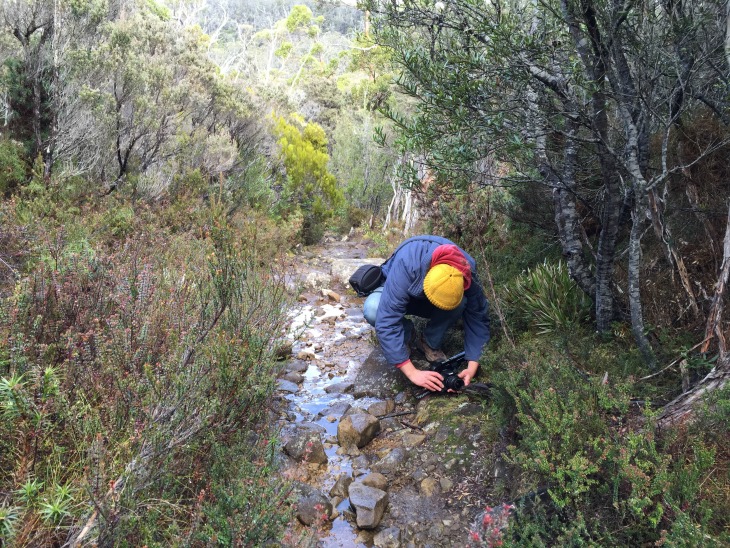

Huz, of course, is most taken by the fungi and their many forms. He wants to photograph them and call them all by name and study their functions and appreciate their many colours and stages of life.
The Owlets enjoy the adventure and hunting for treasure - a new or beautiful fungi to photograph or a bird or animal. They love time spent together and learning new things.
Me, I'm all about texture, colour and pattern. Finding treasures to photograph and take home to use in a quiet moment. And spending time with my gang.
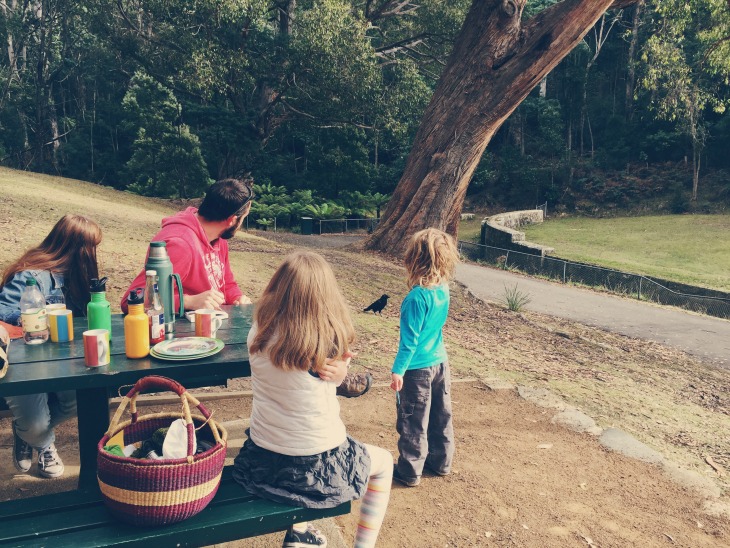
A typical ramble for us involves a hearty breakfast, up early and well rugged. We grab as many snacks as we can find and maybe fill a thermos. If we're lucky, the place we're going will have a fire or barbecue, so we go ready for that, stopping for supplies on the way if we need. We each grab a phone or camera and maybe some tools for viewing things up close or at a distance - magnifiers, telescopes… Then we pile into the car, drive to the end of the street and pick a direction.

Once we're at the forest, we walk slowly, often loudly, and point out what we see along the way. Sometimes this comes in the form of "Dad! I found a fungi!" or "There's a leech on my shoe!!!" (thankfully this isn't often). There will most likely be arguments about who goes in front. And Little Owlet will be reluctant at the start. She feels small entering the deep dark forest, But once we're in the forest, walking, talking, breathing… Then the forest comes alive.

In the middle of the dark forest, we'll find ourselves in a little patch and if we pause, it's like time stops and tiny little lights switch on all around us. We notice an intricate city of organisms, all interconnected and doing what nature does. We observe fungi and humus, poo and pseudostipes, lichen and moss. We see snails and beetles and all manner of tiny interactions.

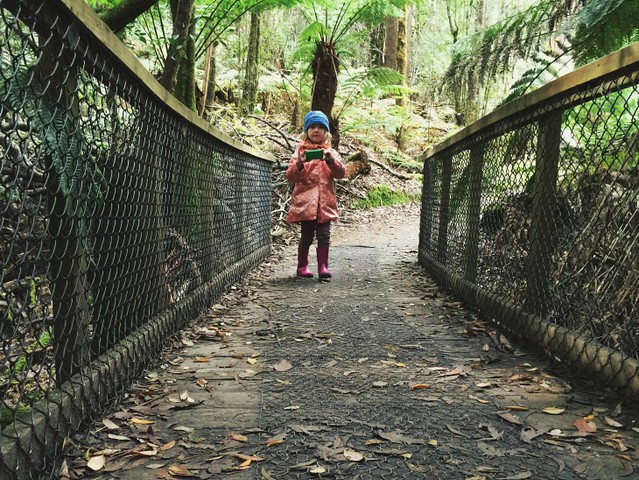
Suddenly we feel neither small, nor big, but part of it all. Passive observers, collecting and recording. Learning alongside each other. Witnessing nature's beauty on that particular day. We know next time we visit, the forest will look very different. We wonder at the interactions that come into play, and we're rather grateful to have an ecologist with mycological leanings on hand.


We'll marvel and wonder at the stories the forest has to tell. About the people here before us. And we make sure to leave it beautiful for the people after us.
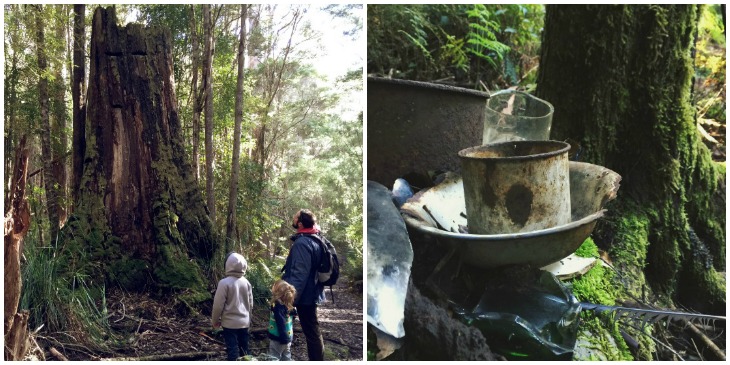
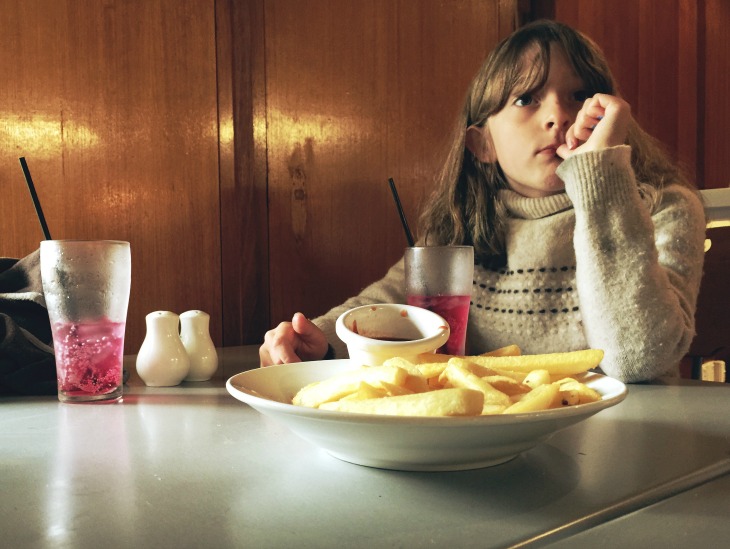
If you happen to be in Hobart next weekend and you'd like to join us for a fungi ramble, you're most welcome. Huz is hosting his inaugural fungi ramble at Ferntree, along one of our favourite walks. You can see us rambling on it in more summery times in this video below. Huz will be sharing tips on how to photograph fungi, their ecology and more. We'll have a special little fungi spotting challenge for little fungi enthusiasts too. It's going to be heaps of fun! Book here if it sounds like something you'd like to do!
.
~ Lauren xx
8 April 2015
Finding Balance
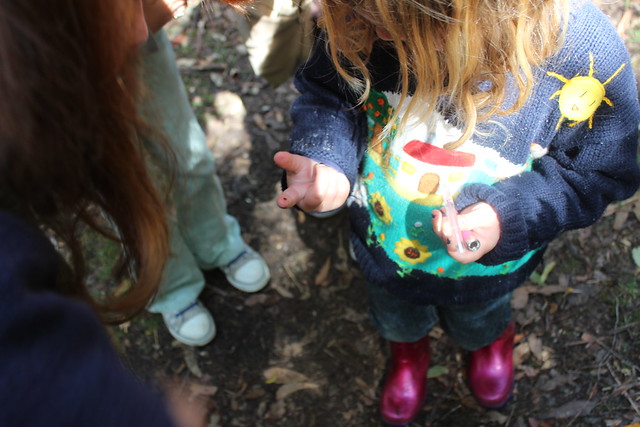
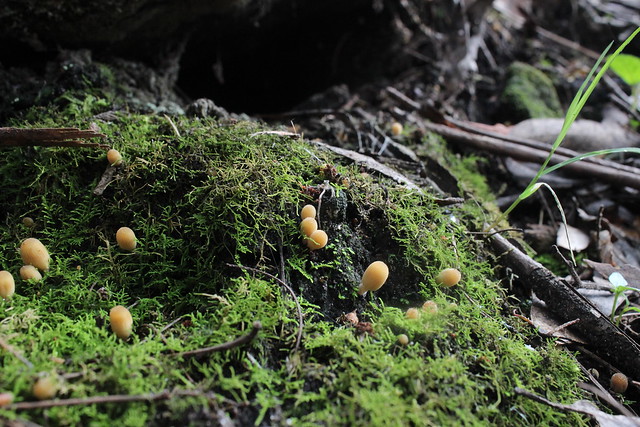
Something I've often given thought to, over the years of home educating and running a small business, is balance. Over the years, others have asked me about it too. How do we do it? How do we find balance? Or rather, will we ever find balance? Is it even a thing? How do we manage to cram our lives so full of all the things we want so much to do?
The conclusion I've arrived at is no. Balance, in this particular life we're living, is and will most likely never be a thing. Not in the way we imagine.
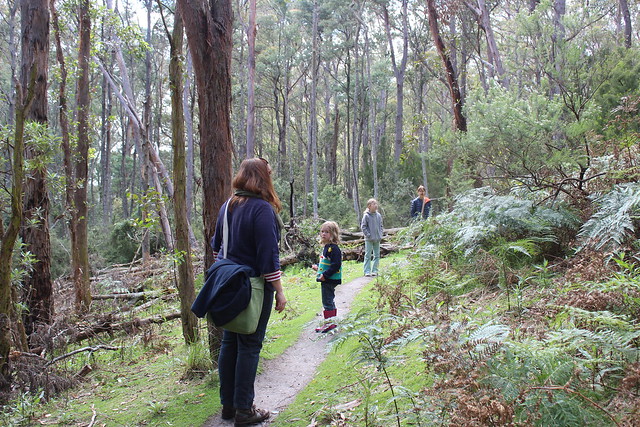
In a household of five creative and passionate individuals, following our passions means we completely immerse ourselves in them from time to time. And while we're following those passions, things get left by the wayside. Perhaps it isn't balance we really need to look for, so much as how to be ok with the chaos, or how to work with it.
For us, finding balance has been more about finding support. It's also been about finding space to wander more and work a little less. It's meant waking up and taking a day off to go exploring, rather than work. It's meant cancelling plans to spend the day in the garden. It's meant knuckling down to get the job done sometimes. It's meant making plans and throwing them out the window in an effort to do what feels best and right and fun. Finding balance has been about looking out for each other and making sure we each have time to indulge our passions.
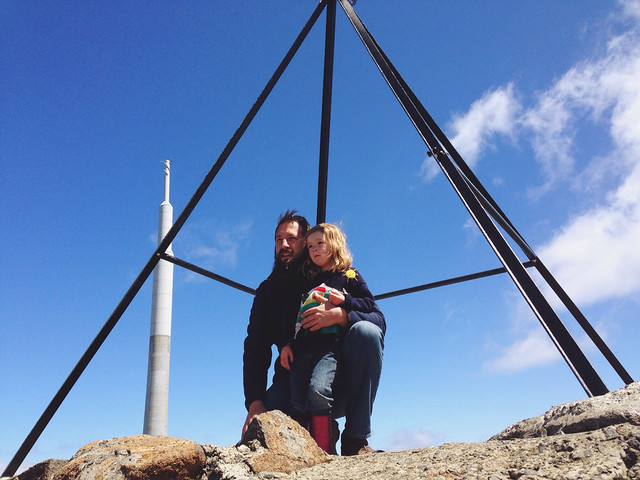

Practically, Huz's shift from his full-time day job, to working four days per week, has meant an extra day for me to work. It's shifted the balance of things in our home in a much more equitable way. It also gives him time with the owlets, usually in nature, allowing him to get out and do what he loves best. On Fridays he always wakes with a grin. It's meant an extra day to play and spend time getting work done in the garden too - one of my favourite things to do. It's a much happier balance, but one that takes some tweaking as we learn to cover the financial gap that one day leaves us. Growing food and working more on our own business helps with that.
Owlets getting older helps a little too. I'm finding stolen snippets of time are getting longer and longer, so now, with a little focus, I can get to more of the stuff that needs doing. So with that, I'm attempting to return to blogging more regularly. In line with this fluid, messy life, where lines are blurred and one thing feeds and flows into the next, this blog will be where we document and perhaps attempt to bring some sort of order from it all. It has always been a space to reflect, document and define our dreams, these past eight years (yes, eight! Can you believe it?), but now it's time for a new Owlet chapter.
So Huz, Owletpapa, will be joining me to document the journey from here, as it becomes our blog. I'm looking forward to the words he'll share and the world of Owlets and the Spiral Garden and all it is and will be, with his insight. And in time, from the owlets' perspective too. We hope you'll join us for the adventure - it's bound to be messy and beautiful and all kinds of fun!
~ Owletmama. xo
PS. These photos were taken at the end of last year, on a day where we decided to take a day off from wrapping orders and ramble around the bush for a bit. We visited Waterworks reserve and Mt Wellington. Two gorgeous spots, just 20 minutes from our home, in Hobart. Much to my astonishment, the world didn't end and all the parcels arrived on time, despite skipping a day.
19 January 2015
Nourish

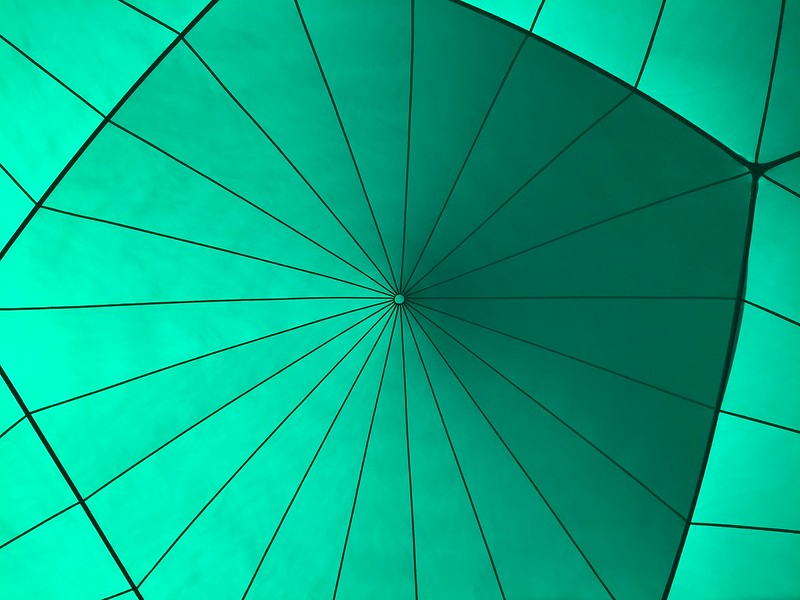
These past few months, I've been living in some sort of busy little hive world of my own creation. Spiral Garden clocked its busiest Christmas period ever, not pausing for breath until Christmas Eve. Full time work whilst home with three unschooled children is less than ideal. Each morning would begin with a leap out of bed and a sprint to the finish line. Of course, we also decided to write and present an e-course this summer. So I added another part-time job to my days. It's been hectic.
There have not been nearly enough moments to pause. Too many days waving my owlets and Huz goodbye as they wandered off on adventures without me. Mind you there was the odd adventure I couldn't resist… And no time to record it.
I've been looking through old photos and blog posts for the e-course material and feeling jealous of those free people through the screen. The ones with the three small owlets and the nice nest and all the fun times in the Tasmanian countryside. I want to live like those people! Haha!
It's been brilliant to have efforts pay off. The Seedlings permaculture e-course seems to be going along swimmingly. Spiral Garden continues to hum along at a far more relaxed pace, helping to fund Christmas and birthdays and the odd pile of mulch for the garden. But in amongst it all there were too many take away meals, too many catch-ups with friends missed, too many weeds left to grow and veggies left un-harvested… Too many moments to connect with my owlets and Huz, missed. There was overwhelm.
I can see the light at the end of the tunnel just now, and it looks wonderful. A reawakening of sorts. Phew! It's going to be ok.
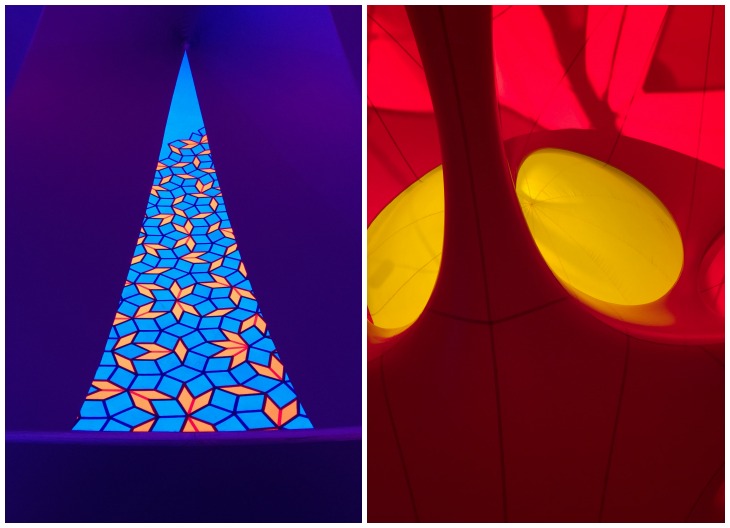
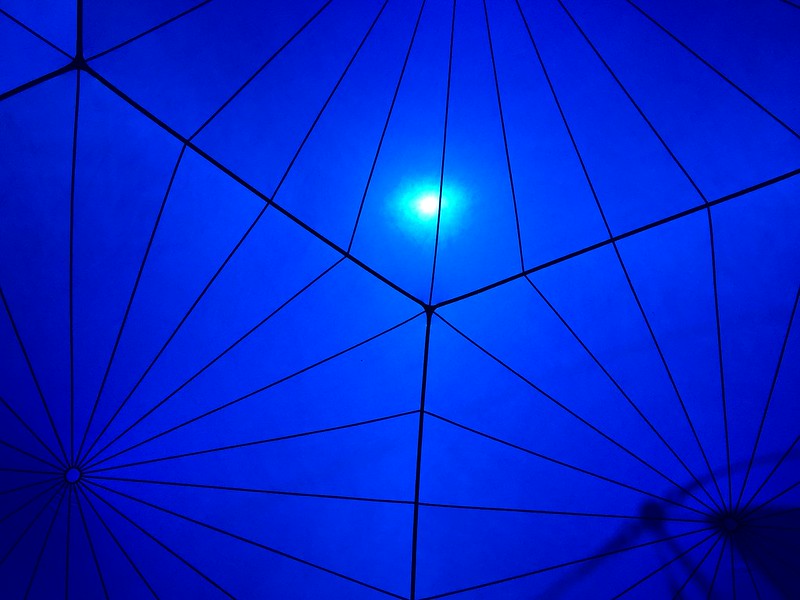
Each year, I'm in the habit of choosing a word that encompasses what I'm hoping to bring to my year. A couple of years ago, I chose abundance and wound up doing a Permaculture Design Certificate which helped deliver abundance in spades. Last year I chose balance, and well… That didn't work out so well. Ha! Balance seemed out of my hands as things steamrolled along.
This year, I've chosen nourish. It's a lovely word that reminds me to pause, to eat what feels good, to move my body in ways that feel good. To spend time doing things that nourish me. Like gardening and creating things and being useful with my hands.


This morning we spent time at Exxopolis at MOFO. As I suspected, the colour worked it's magic on me beautifully. A little colour therapy and time locating a nourishing colour. Blue felt calming. Green was a rainforest and yellow was hot and uncomfortable. Huz felt anxious, no matter the colour. Tiny wanted to keep moving. I sat in a red, womb-like pod for almost ten minutes before we left, and floated out. A great reminder that what nourishes each of us is so different. A reminder to seek what nourishes me.
It was also a great reminder to come back here and post about our adventures. To have them and record them so I can remember that feeling a little longer. Remember the fun we've had. That family with the owlets, through the screen. I'd like to be them again.
Hello blog. Happy new year. Let's begin, shall we? xx
26 October 2014
Seedlings

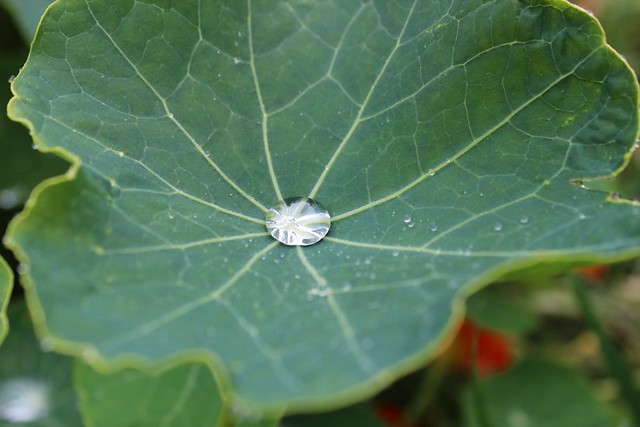
Last night, very late (perhaps because we're a little nervous and excited about it and wanted to start with a whisper…) Huz pressed post and we shared something pretty big that we've been working on. We moved from that excited limbo state where your project is still an idea, onto that OMG moment where your work is out there for all the world to see. Within an hour we had our first participant sign up (a gorgeous, supportive friend who we're ever so grateful for) and we headed off to bed. This is real now. It's a thing. This morning we were joking that we might have to make up a bunch of fake Facebook identities to follow through with the whole online community we're aiming to create for our lovely participant - oh we're going to be busy alright! Haha! I hope she's not the only one. I hope…
After Huz's Permaculture Design Certificate finished, we found ourselves to be a pair of passionate, optimistic permaculturalists, looking for ways to get our hands dirty, and not just in our own backyards. Big Owlet saw us gardening and talking and planning and wanted in on it. She wanted to know what we knew. So she asked us to teach her. This unschooled kid, who's never really asked to be taught much at all, wanted to know all about permaculture too. A seed was planted and so we began.
Over a number of weeks, we picnicked and talked and began with the permaculture principles, using some fun activities to back up our discussion. All the owlets took to it like ducks to water. We heard phrases and words entering their vocabulary and saw their confidence and understanding of our own permaculture design begin to make sense to them… So we wanted to share our experience with others and the Spiral Garden Seedlings program was born.
Looking at the experience and backgrounds we have combined, I know we've come up with something that draws on all our strengths and knowledge to date. We're hoping to share a little of our experience as home educators, an ecologist, a designer, gardeners, parents and custodians of the earth. And we're hoping to inspire some connection and nurturing experiences for others. To help pass on some important life skills and welcome a whole new generation of earth custodians to the fray.
We discovered that in the process of passing on information to our owlets, we were revising our own permaculture learning and reinforcing it. We realised that by reaching out to families, we can not only pass this information onto children, but to their parents too. And as my mum just called to tell us, their grandparents as well! Three generations of wonderful humans working to look at the world and nurture it in a way that can only be good. I'm looking forward to getting to know them and work with them too. It's a big job, so let's begin… xx
30 September 2014
Why we love the farmers' market

We're getting into a little rhythm in our nest. Having sworn off big supermarkets a couple of months ago, we've started to notice we're managing to pick something from the garden for most meals. Finally! We get a delivery from a local shop roughly once a fortnight, with ethical meats and staples we need, which has been brilliant. Next we're working on a food and essentials co-op with our homeschool co-op buddies so we can order organic, awesome staples at a price our mostly-single-income families can afford.
The final piece of the puzzle for us has been going semi-regularly to the farmers' market. Here's how it works:
1. Arrive and secure donuts or bagels or freshly shucked oysters or something equally amazing for breakfast. Scoff at leisure.
2. Flag down some seasonal veg that we don't have growing in our garden just yet - this will diminish over time, all going well.
3. Find some ethical meat from happy animals. Right now we're loving goat.
4. Pick up a pot of local raw honey and locally roasted coffee.
5. Check out plants, seeds or spuds to take home and grow our own. Or just to admire and get excited about.
Here's why it's so great:
1. The food is so fresh! The veggies we buy last much longer (like, weeks longer) than any supermarket bought produce.
2. We know the people we buy all the produce from. We can ask them about how they grow their food and we see the care and pride they take in it.
3. Sometimes we bump into friends we haven't caught up with in a while, or just share a wave and a hallo across the crowd. That's a bit nice!
4. The donuts and bagels and oysters and… well, you get the picture.
Best of all, the owlets see the transaction of money passing hands and each item being directly paid for, rather than just a big credit card bill at the end, paid for by plastic. It's more real for them and for us. And they like to be involved in buying things too. Unlike the supermarket, which is usually a place we'd rather leave as soon as we've stepped inside, the farmers' market is like a regular community-building experience each time. And one we talk about after the event. It's like we haven't been out to do the shopping at all! See you there next week? xx
Some beautiful resources for talking more about farmers' markets with your owlets:
To Market, To Market, by Nikki McClure.
Alternating between story and fact, this lovingly-crafted picture book follows a mother and son to the weekly market. As they check off items on their shopping list, the reader learns how each particular food was grown or produced - from its earliest stages to how it ended up at the market. Find it here.
Let's Go to the Farmer's Market Kit.
This kit contains everything kids need to have tons of fun at the farmers' market: a strawberry tote bag, 20 activity cards, an informative booklet about farms and the farmers' market, plus a shopping list pad. Find it here.
14 September 2014
When life gives you neighbours…
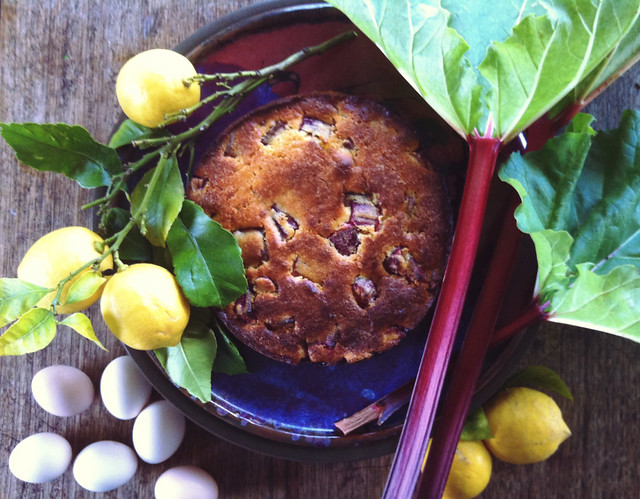
Every time our minds wander to getting away from it all and moving to some isolated patch of bush, we think about all the good things we have where we are. Wonderful neighbours is certainly on our list. Even though we are that family in our street… The house with artwork and fingerprints splashed all over the front windows… With Owlets roaring (sometimes nude), around the garden during the daytime. And a weedy, unkempt garden it often is, by most standards. We're that family who are always home and loud and choose to do things a little bit differently. Some of our neighbours choose not to engage and keep heads down as they run from the car to the sanctuary of home. But the neighbours who do say hello and make time make our street a beautiful and supportive extended family, of sorts. A community.
Over the back fence is a piano teacher who has helped Owlets learn when they've shown interest. Happy for us to fling a ladder over the back fence, she gladly catches them on the other side for a half-hour lesson. And wonderfully, she's not been offended when they decide to give it up, or begin again. Recently her house guests asked to feed our chooks weeds from the garden as they work, having seen us do the same on our side. And so we discovered another beautiful connection for our permaculture design.
Next door on one side, we have a neighbour who has a beautiful, wild garden and she's happy for our Owlets to explore it. There's an amazing dolls house inside, the Owlets tell me. And more than once, we've been given a cup of sugar, a pile of newspapers or a handful of lavender, when we've needed it.
On the other side are neighbours who the Owlets have adopted as surrogate grandparents. Tiny likes to ring the doorbell and say "hi", if she hasn't seen them in a while. They knew our house better than we did when we first moved in and they're always a wealth of information about our street. They assure me that on the night Tiny was born, they heard nothing - although how that can be, I have no idea!
Next door, they are around most days, like us, and pottering in the garden, like us. Their garden is neat, well tended and abundant, with more than enough food for their meals and plenty to share. Often I've seen our neighbour popping in to houses in our street with apples or lemons for who ever is home. Sometimes it's us. Once it was a posie of violets to say she thought I was a great Mum. She had four kids of her own, you see... And there are plenty of times the Owlets have been handed a bowl of raspberries over the fence to gobble up gleefully on the way inside to tell me about it, red stained chin and all…
 |
| "Neighbourhood" by Phoebe Wahl. Available in our shop! |
We've been the glad recipients of a tiny rhubarb plant from next door, which is now huge and adorning our food forest. One of the enormous tomatoes passed over the fence was saved for the seed we have growing in seed trays in the lounge room… And we're more than glad to help out with the lemon glut when we collect the mail while they're away on holidays.
These neighbours embody the permaculture ethics of people care and fair share so well. I suspect that they see success the way I do; that true success is not just being able to feed your own family, but those around you too. And spreading a little joy along the way… I've been giving a little thought to how we can work to make this friendship a little more reciprocal. To be better neighbours and have enough to share (more than the odd cup of milk or stick of butter - although these are helpful too!). Enough useful stuff anyhow, and choosing a few things that are not in our neighbour's garden has been in the back of our minds while putting together our permaculture plan. To begin with, I think it might be a few eggs. They don't have chooks. And when some of the fruit trees grow up a bit, maybe some quinces or pears or cherries. I may just save some seed from the cauliflower and maybe our neighbour will finally have luck with that too, as we have. Hopefully there'll be enough to share with other neighbours too. Even the ones who don't have time for a chat.
This is how community building starts. Its how Owlets find mentors and friends of all ages. Its how we find support and our garden grows stronger. And it's how, when you think there's nothing much in the cupboard, you suddenly have the fixings for Lemon & Rhubarb cake…
Lemon & Rhubarb Cake
5 rhubarb stalks cut into 2cm pieces
1/3 cup rapadura/coconut sugar/raw sugar/maple syrup/alternative
125g soft butter
1 cup of rapadura/organic raw sugar/ honey/rice malt syrup. Add less if you like it less sweet.
zest and juice of 1 lemon
3 eggs
1 cup plain flour
1/3 cup SR flour
100ml yoghurt
Preheat the oven to 180ºC
Grease and line a 20-22cm springform cake pan
Toss the rhubarb with rapadura and set aside
Cream the butter & larger quantity of sugar/sugar alternative.
Add lemon zest and then the eggs, one at a time.
Stir through the lemon juice.
Fold the flours in gently, a little at a time, alternating with the yoghurt.
Fold in the rhubarb.
Spoon into the cake tin and bake for about 40 minutes, until browned on top.
Test the cake with a skewer. If the skewer comes out with some cake batter on it, cook for another 5 minutes and repeat.
Cool for 15 minutes before removing the tin.
Dust with icing sugar if you like - we don't think it needs it!
Adapted from Allan Campion and Michele Cranston's Rhubarb Lemon Cake in Every Day Cooking.
Published by Hardie Grant Books in 2006.
13 May 2014
Owlets at play...
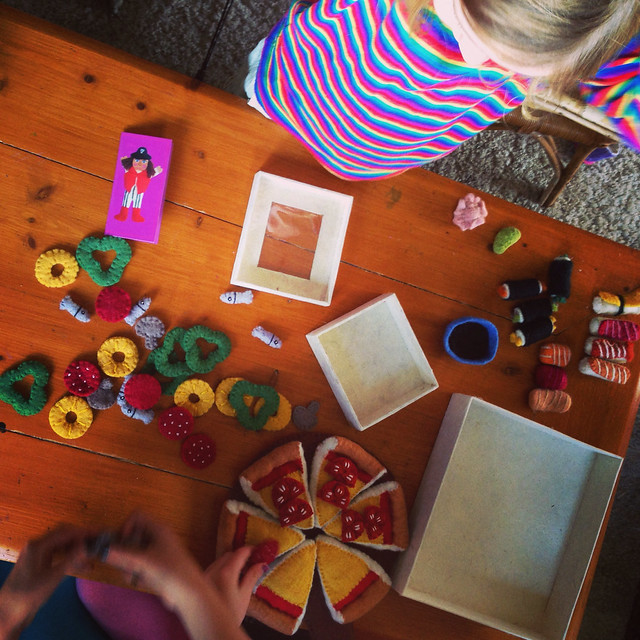
This was that time where a rather large box of gorgeousness arrived and part of it was snabbled up by our owlets before I could blink. And then they played and played and played…
I'm writing about it over on the Spiral Garden blog today. Won't you stop by? xx
Subscribe to:
Posts (Atom)

















